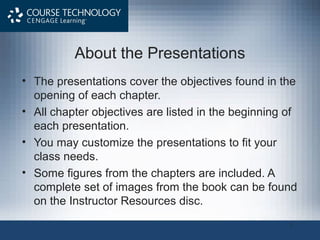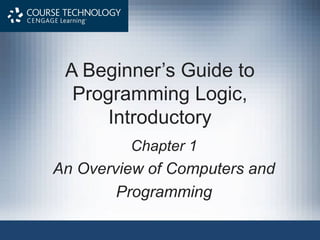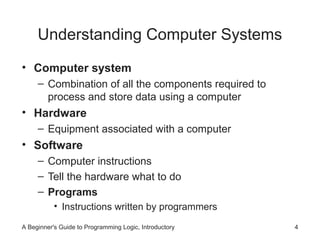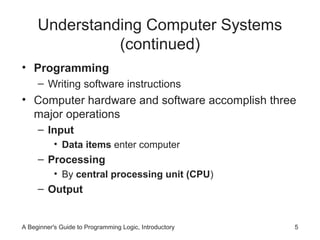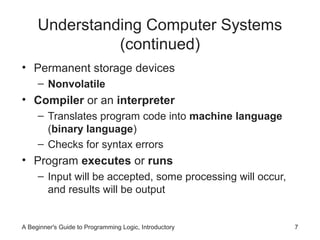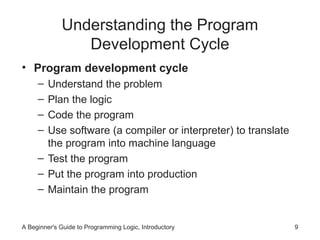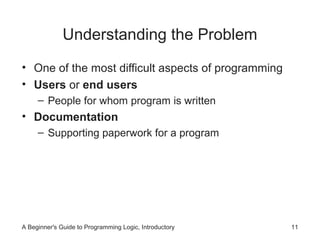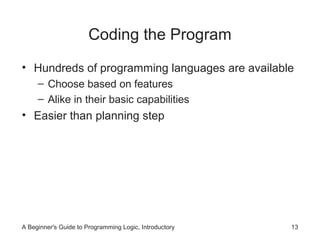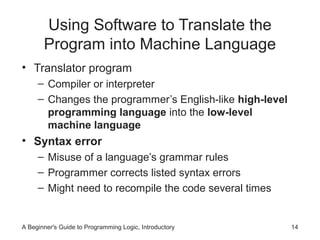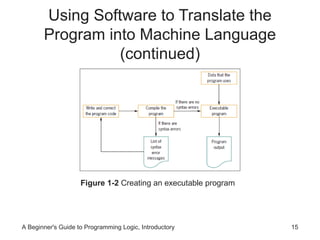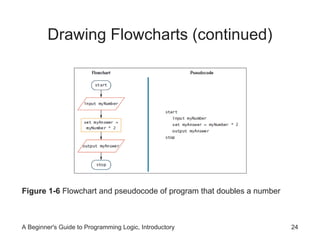The document outlines a beginner's guide to programming logic, including key concepts such as computer systems, program development cycles, and the evolution of programming models. It emphasizes the importance of understanding, planning, coding, testing, and maintaining programs, as well as utilizing pseudocode and flowcharts for planning. Additionally, it discusses programming environments and the differences between procedural and object-oriented programming approaches.
